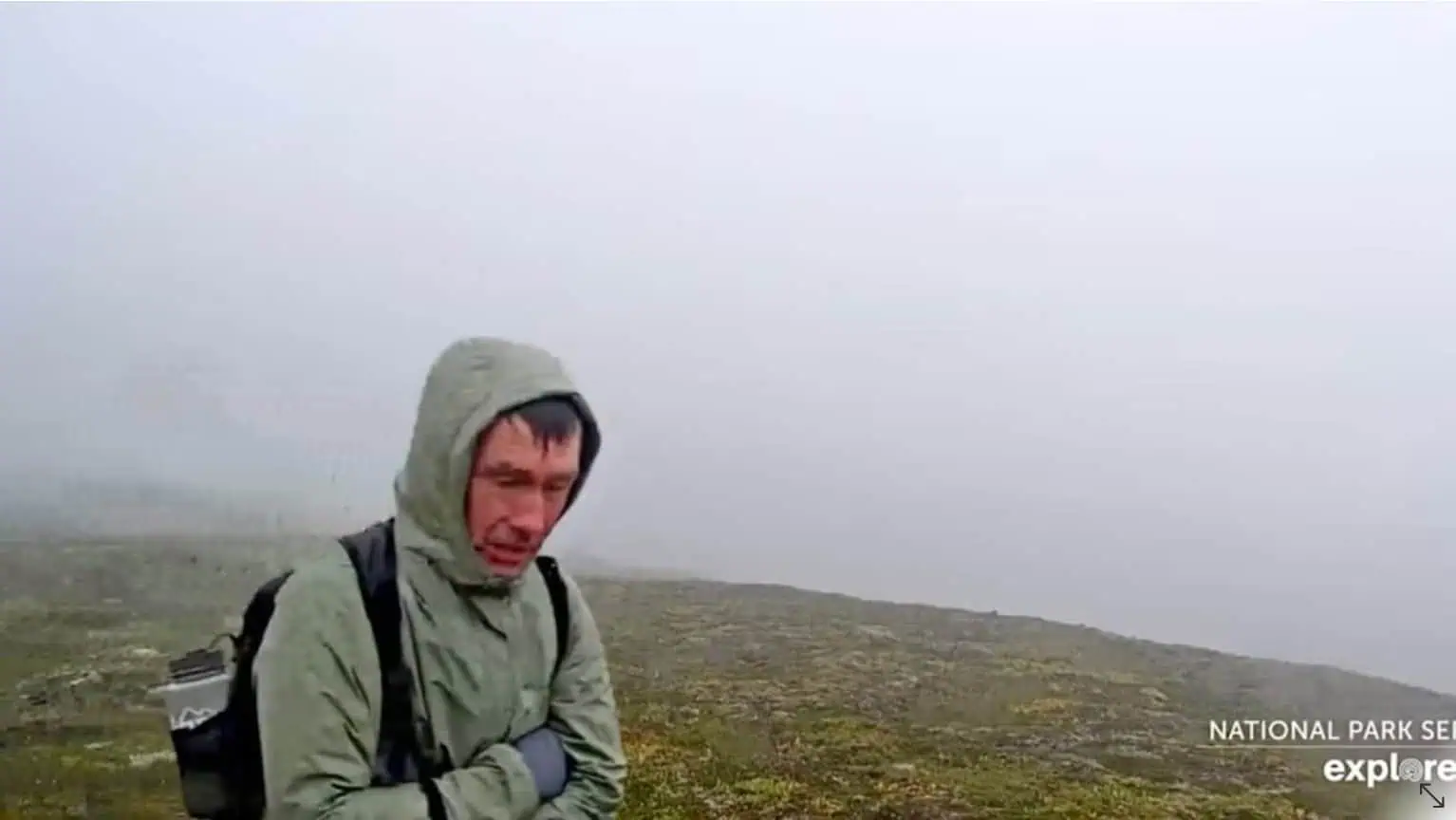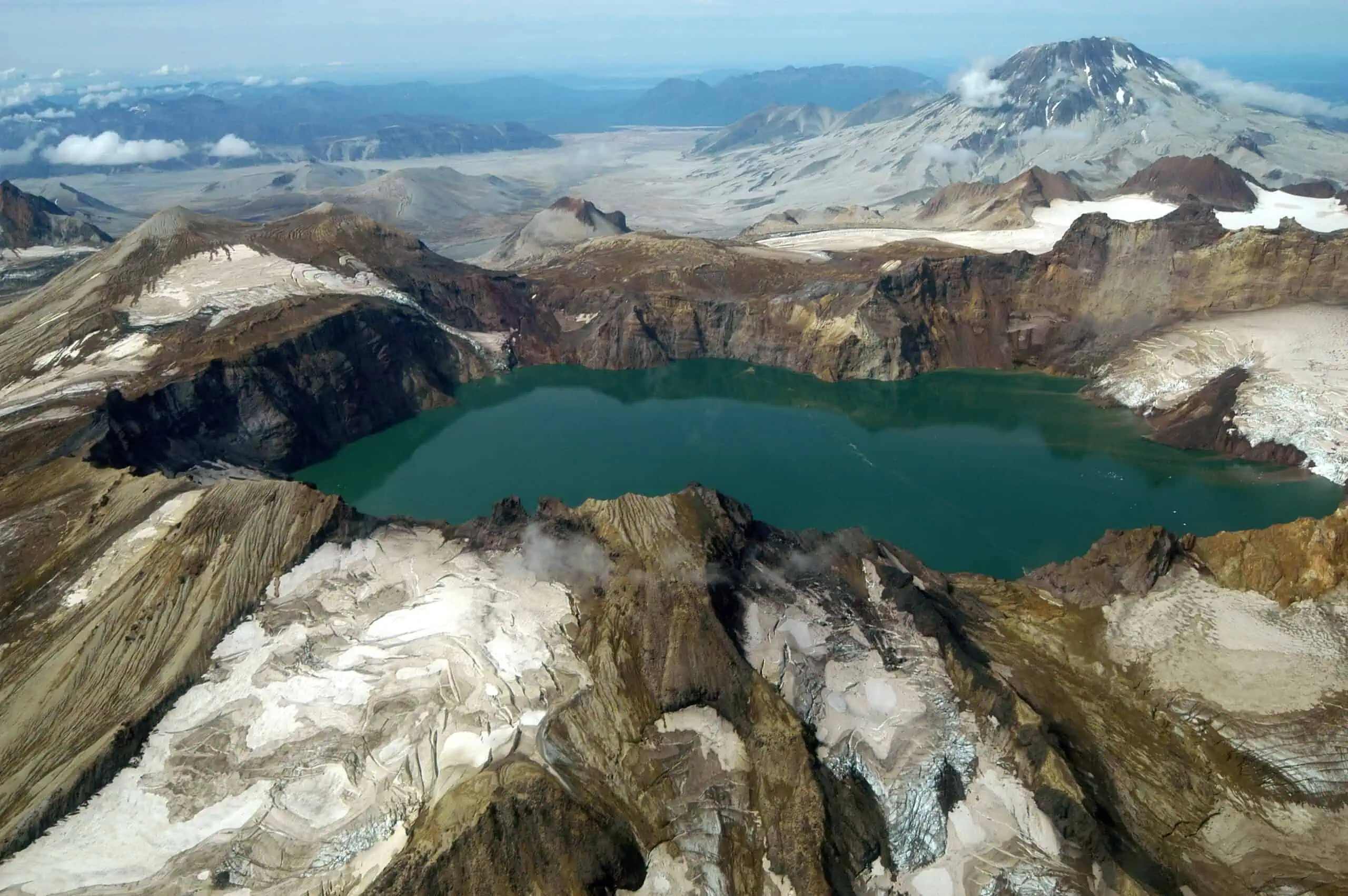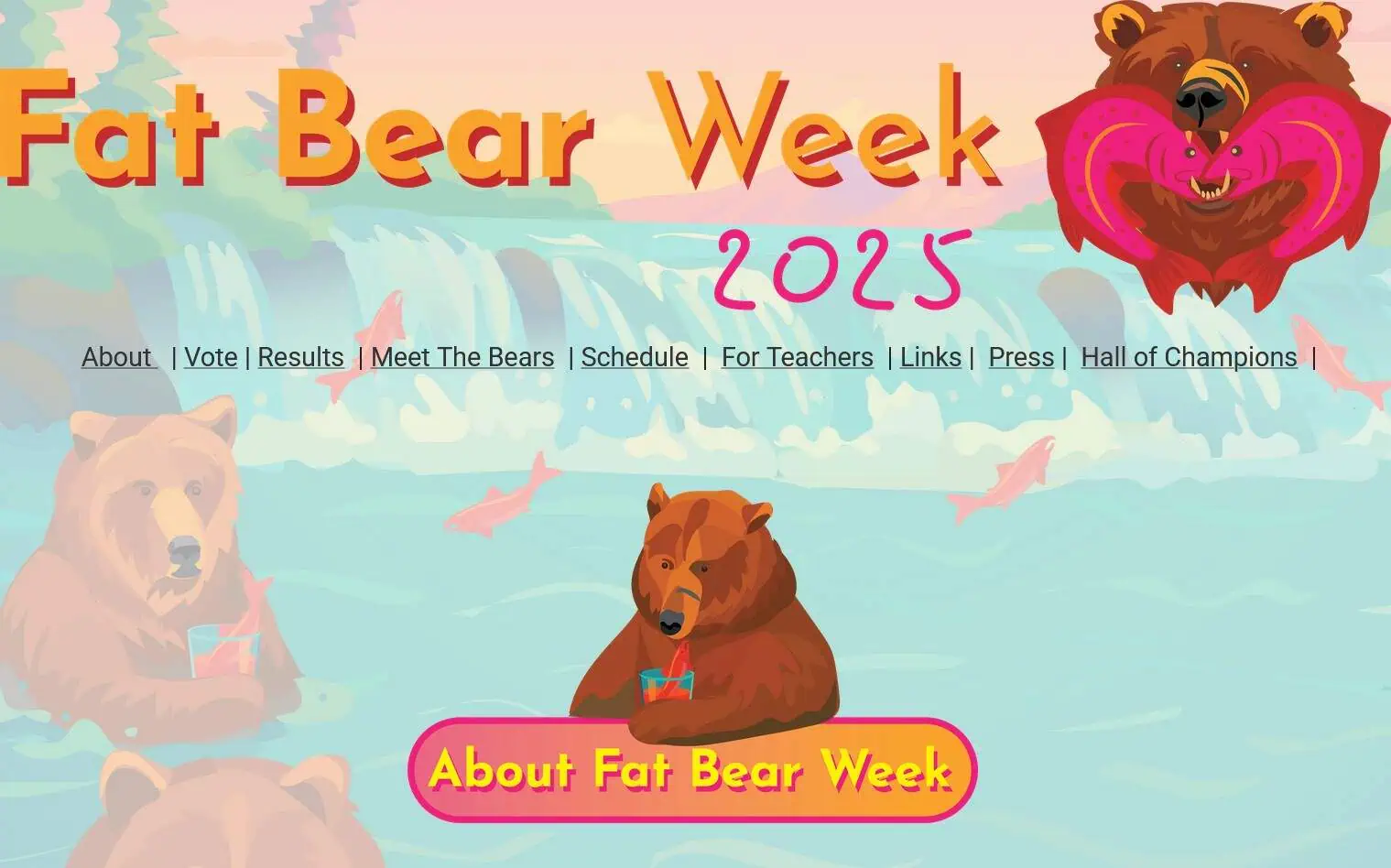In September 2023, a lost hiker in Katmai National Park & Preserve was rescued after alert viewers spotted him on a Fat Bear Week livestream camera.
Katmai National Park and Preserve in southwest Alaska is famous for many things: towering volcanoes, a vast wilderness of tundra and rivers, and, of course, the iconic brown bears that gather each summer to feast on salmon at Brooks Falls. Every September, millions of people around the world tune in to the park’s livestream “bear cams” to watch these giants grow round and ready for hibernation during Fat Bear Week, a beloved online celebration of healthy wildlife and the abundance of Alaska’s ecosystems. In early September 2023, those same cameras did more than entertain . . . they helped save a life.
On the afternoon of September 5, viewers watching the Dumpling Mountain camera noticed something unusual. Instead of bears, the livestream showed a lone man, soaked and shivering in the rain, standing in the open and waving both arms toward the camera. He appeared to mouth words like “help,” clearly signaling distress. The Dumpling Mountain cam is positioned several miles from the park’s main visitor center and has no sound, but the message was unmistakable.

Within minutes, chat moderators and devoted “bear cam” fans mobilized. They alerted Explore.org, the nonprofit that operates the live streams in partnership with the National Park Service. The company quickly relayed the reports to park rangers, who launched a search and rescue operation. A few hours later, rangers located the hiker, cold and wet but safe. He had been lost on the mountain in deteriorating weather and managed to find the camera site, knowing it might be his best chance to be seen.
The hiker’s identity has never been made public, and the Park Service has respected his privacy. But the circumstances of his rescue highlight both the rugged challenges of Katmai and the unexpected ways technology can help in remote wilderness.
A Park Built on Volcanoes and Salmon
Katmai’s landscape is as dramatic as any in Alaska. The park was originally established in 1918 to protect the Valley of Ten Thousand Smokes, a vast ash-filled expanse created by the 1912 eruption of Novarupta, the largest volcanic eruption of the 20th century. Today, Katmai encompasses more than four million acres of wild rivers, glacial lakes, and tundra-covered mountains. There are no roads into the park. Visitors typically arrive by small plane or boat, and once inside, hiking trails are limited and weather can shift quickly from sunny to stormy.

The park’s abundant salmon runs support one of the densest populations of brown bears in the world. Each summer, dozens of bears congregate at Brooks Falls, where cameras capture them snatching leaping fish from the rushing water. These livestreams, available through Explore.org, have become a worldwide phenomenon. Viewers learn to recognize individual bears by their markings and watch them fatten up for winter.
Every fall, Katmai and Explore.org host Fat Bear Week, an online bracket tournament where the public votes for the bear that best exemplifies pre-hibernation heft. It’s lighthearted fun with an important message: healthy bears reflect healthy salmon runs and ecosystems.
From Fat Bears to a Human Rescue
The Dumpling Mountain camera, where the hiker was spotted, normally provides sweeping views of Naknek Lake and the Brooks River Valley. It’s a quieter angle than the bustling Brooks Falls cams, but it still draws a loyal audience of viewers who enjoy Katmai’s wide-open scenery and occasional bear cameos.
Those viewers’ quick thinking turned entertainment into action. By recognizing that something was wrong and alerting park officials, they became part of a successful rescue. Katmai rangers later emphasized that the hiker did the right thing by staying visible and signaling for help once he realized he was lost.
The incident also serves as a reminder to visitors: Katmai is wild country. Weather can change rapidly, GPS devices can fail, and trails are limited. Proper preparation—good maps, warm clothing, and an understanding of the terrain—is essential. Even experienced hikers can find themselves in trouble.
A Story of Connection
In a way, the rescue captures what makes Katmai and Fat Bear Week so special. Millions of people who may never set foot in Alaska feel a connection to this remote park through its cameras. They cheer for chubby bears like 747 and Otis, learn about salmon ecology, and celebrate the cycles of the natural world. In this case, that same virtual connection crossed the species line to help a fellow human.
Katmai’s rangers expressed gratitude to the online community, and viewers celebrated not just the bears but the safe outcome for the stranded hiker. As Fat Bear Week rolled around a few weeks later, fans had an extra reason to tune in and appreciate the power of a camera trained on the wilderness.
Top photo of Katmai National Park and Preserve, Alaska by Nate Hughes/NPS


